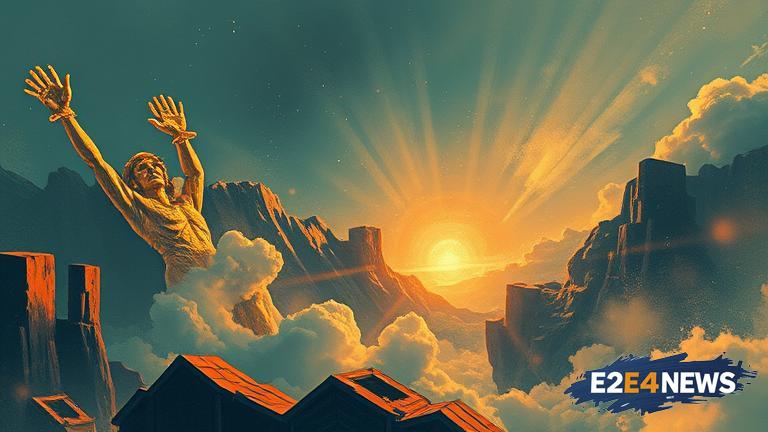The advent of artificial intelligence in cinema has opened up new avenues for filmmakers to explore the sublime, a concept that has been debated by philosophers and aestheticians for centuries. The sublime, in the context of film, refers to the experience of being overwhelmed by the sheer scale, beauty, or horror of a cinematic spectacle. With the help of AI, filmmakers can now create complex, detailed, and realistic environments that were previously unimaginable. The use of AI in cinema has also enabled the creation of new forms of storytelling, such as interactive and immersive experiences. The article discusses how AI is being used in the film industry to create stunning visual effects, animate characters, and even generate entire scripts. The author argues that AI is not only a tool for creating special effects but also a means of exploring new themes and ideas in cinema. The article also touches upon the concept of the ‘atomic monster’, a term used to describe the fearsome creatures that have been a staple of science fiction films for decades. The author suggests that the atomic monster represents a symbol of the fears and anxieties of the modern world, and that AI is being used to reimagine and reinterpret this symbol in new and innovative ways. The use of AI in cinema has also raised important questions about the role of the human filmmaker in the creative process. As AI becomes increasingly sophisticated, it is possible that machines may be able to create entire films without the need for human intervention. This raises important questions about the nature of creativity and the role of the artist in the digital age. The article concludes by suggesting that the intersection of AI and cinema is a rapidly evolving field that is full of possibilities and uncertainties. As AI continues to advance and improve, it is likely that we will see new and innovative forms of storytelling emerge that challenge our understanding of the sublime and the atomic monster. The future of cinema is likely to be shaped by the intersection of human creativity and machine intelligence, and it will be exciting to see how this intersection plays out in the years to come. The use of AI in cinema is not limited to the creation of special effects, but also extends to the analysis and interpretation of films. AI can be used to analyze large datasets of film footage, identify patterns and trends, and even generate new insights and interpretations. This has the potential to revolutionize the field of film studies, enabling scholars to analyze and understand films in new and innovative ways. The article also discusses the potential risks and challenges associated with the use of AI in cinema, including the potential for job displacement and the loss of human creativity. However, the author argues that these risks are outweighed by the potential benefits of AI, including the creation of new forms of storytelling and the democratization of filmmaking. The use of AI in cinema is also likely to have a significant impact on the film industry, enabling new business models and revenue streams to emerge. The article concludes by suggesting that the future of cinema is likely to be shaped by the intersection of human creativity and machine intelligence, and that this intersection will have far-reaching consequences for the film industry and beyond. The sublime in cinema is a complex and multifaceted concept that has been explored by filmmakers and scholars for decades. The use of AI in cinema has the potential to redefine our understanding of the sublime, enabling new forms of storytelling and visual spectacle to emerge. The atomic monster, as a symbol of the fears and anxieties of the modern world, is a powerful metaphor for the dangers and uncertainties of the digital age. The use of AI in cinema has the potential to reimagine and reinterpret this symbol in new and innovative ways, enabling filmmakers to explore new themes and ideas. The article suggests that the intersection of AI and cinema is a rapidly evolving field that is full of possibilities and uncertainties, and that the future of cinema is likely to be shaped by the intersection of human creativity and machine intelligence.





